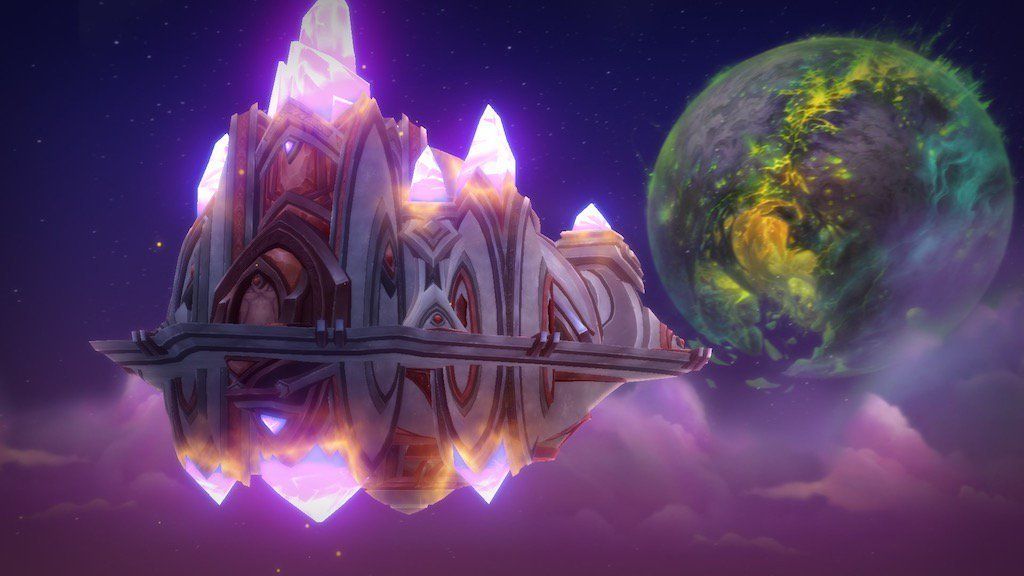How Warcraft builds stories players care about: Part Two
Want more insight into the World of Warcraft storytelling process? Step right up.

Want more insight into the World of Warcraft storytelling process? Step right up.
This week, we're sharing our extended interview with Creative Director Alex Afrasiabi as he walks us through the ways storytelling in WoW helps drive great gameplay, and how the technology of game design has served the game's storytelling.
In Part One Afrasiabi walked us through a brief history of the quest design tools in the game and how designers were steadily given more control of the world to help them tell better stories.
Today in Part Two, Alex speaks to the maturing of the story development itself, and how the game has worked to thread epic narratives through the game over multiple expansions.

In the earlier days, World of Warcraft stories were quite distinct. Since the end of Mists of Pandaria [the game's fourth expansion], we've seen story arcs seeded across expansions and build the storylines for what is about to happen next. What's been behind that evolution within the story team?
Afrasiabi: Prior to Pandaria, we would plan an expansion ahead at a time and it didn't necessarily have anything to do with the prior expansion.
So it did start there in Pandaria and we tried to carry that through where it makes sense.
The benefit there is in world building, in story building and it's in character building that you really kind of get the bigger character's built.
You always get these forum posts every once in a while, which is like "WoW's running out of bosses to kill. The Warcraft 3 well is nearly dry." And there's some truth to that.
But the reality is, part of the continuation of narrative involving the development of these characters is to do exactly that, right?
If you think about a character like Garrosh Hellscream, he was a twinkle in our eyes and unknown to the player base and it took a couple expansions to actually make him a mega world level boss.
And you look at characters like Saurfang. Saurfang's a character I put in the game literally for one purpose back in the day - I needed someone for player's returning with Onyxia's head to talk to.
He became that NPC that was just this prototypical, hard-as-nails orc that was all about honor and duty.
It was, like, three in the morning or something when I wrote out his, what we call his gossip text, which is when you click on an NPC and you have a pane of information that gives you some kind of dialog.
I wrote that and it was pretty serious. I wrote that, and people read that and were like "Damn, this guy's no joke!" And interestingly enough that little thing, that little snippet became the mythos of what Saurfang is today. After all these years his roots are still held in that one statement.
The point and purpose of us creating new expansions, new characters, new content, and developing them across these expansions is exactly that. To create new heroes, and to create new villains for us to face.
The reason for that is so we have some equity in these characters. So they're not just these random bosses that show up that you don't really care about - that you kill and you don't have any feelings about.

I've heard you have a team of 'Lorekeepers' and a 'Chief Historian' to help the story team ensure new stories fit into the grand mythology of the game. How do they feed into the game development process?
Afrasiabi: Our lore keepers are invaluable to us. A game and an IP this big, that is touched by so many individuals that are each telling stories, that are each pushing forth the narrative - there's only so much a single person can keep in their head.
So that's really what lore does for us is keeps our facts straight. We're able to back check and check and fact check with them about anything.
"Hey, would an ogre have three heads?" That's dumb, but you get what I'm saying.
They can really verify everything and that group is at our fingertips in terms of being able to turn around information that we need and they are awesome at their jobs.
We would have a much harder time doing what we're doing, especially if we continue to add more and more content that touches other content, which it always does, that has the potential to create weird situations in lore that didn't exist before.
Or to avoid the dreaded retcon, they help us with all of that.
Recently Blizzard also published a series of three 'Chronicles' books that tell the grand sweeping history of the stories of Warcraft, all the way back to the very beginning of the game's universe. How does that fit into the storytelling team's ongoing work?
Afrasiabi: The Chronicles are historical, it's not a telling of the present or the future, it is a telling of the things that happened.
So it's an invaluable resource and an asset to us for fact checking. Again, going back and looking up the birth of the cosmos and the origin of the Naaru and things like that, it's great, fantastic for that.
As you go through such comprehensive works of knowledge, you're going to be inspired, you're going to get ideas, you're going to have thoughts like "I totally forgot about this. And it's over here, it's there for us to use and grab. We could push that story forward if we so choose."
It's really good for that, especially with the way it's written. We love it.

At Blizzard, 'Gameplay First' is emblazoned in the HQ courtyard as one of the compass points of the company's eight core values. How does the great work you do on story feed into that core principle?
Afrasiabi: If you look at story as a layer that we put atop the game, it's a motivational factor in the things that you do and your actions in the world and it gives them consequence and weight. It puts emotionality behind things.
Why am I killing gnolls anyway? Just a bunch of furry dudes that are minding their own business. Without the story, that activity becomes meaningless - and in some ways potentially mean, right?
Well, as soon as you find out that the gnolls keep raiding the orphanage and their eating children - which they're not but let's pretend they are. That suddenly gives you the urge to stop these gnolls at any cost!
Story explains your actions as a player and gives you the ability to choose the things you want to do and the method you want to do them in.
And you know, the game without the story would be a perfectly fine and serviceable game. The gameplay would be great as an MMO and the way it's fashioned.
But the story's the beating heart of the game. It's the thing that continues to push the world and the characters and the players within it to that next great thing.
So it's integral to the gameplay. Integral.
Go back to Part One here. Part Three is now live too, where we look to the future of Warcraft storytelling and Alex offers fans some promises, and hints at the pacing of what's ahead. Stay tuned!
Byteside Newsletter
Join the newsletter to receive the latest updates in your inbox.



